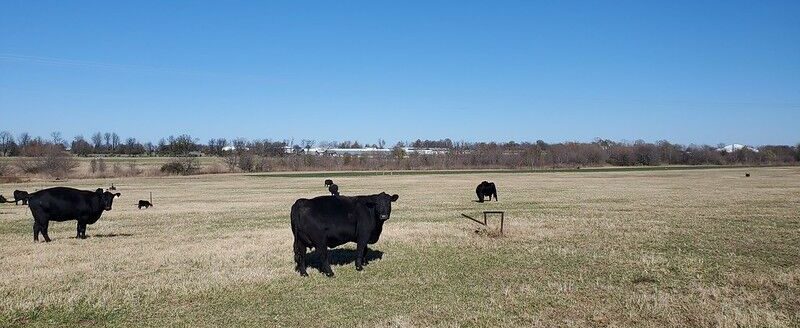Planning and patience lead to better forage and cattle, says MU Extension specialist
Patience pays off for cattle producers who wait for fescue to grow some before turning cattle out for spring grazing, says University of Missouri Extension livestock specialist Patrick Davis.
"After a long winter of feeding hay, producers are anxious to turn cattle into the fescue pasture," Davis says. "However, it is better to wait until fescue grows to heights of 3 to 8 inches before letting cattle onto fescue pastures."
Proper forage height is critical for several reasons, Davis says.
One reason is to reduce the chance of fescue toxicosis. Recent research done by MU Extension agronomist Sarah Kenyon found that ergot alkaloid levels are most toxic in the bottom two inches of fescue. Grazing too short puts cattle at risk. Another reason is that fescue tries to make seed in the early spring. As stems elongate and seed heads emerge, ergot alkaloids become concentrated in the seed. The seed can be toxic to cattle.
Strong root systems are another reason to let fescue grow to a height of at least 3 to 8 inches. The height of the plant above the ground represents the root depth. Plants need good roots to take up water and nutrients. Grazing too soon reduces the opportunity for roots to grow well and can destroy the root structure. This results in thinner grass stands and infestation of weeds leading to lower quality pastures.
Overgrazing also causes cows to eat more stems and fewer leaves. The stem portion of the forage is less nutritious than the leaf, which may result in cattle not consuming enough nutrients to meet their needs. Therefore, ideal grazing height should be between 3 to 8 inches, Davis says.
Prevent forage tillers from making a seed head by grazing before seedheads form. By doing this, leaves from other tillers from the same plant will grow rapidly, improving production and increasing yield of digestible nutrients.
Keep ahead of grazing fescue by planning, says Davis. Keep fescue in a 3 to 8-inch height range in a rotational grazing system. This allows better control of grazing pressure and height than in a continuous grazing system. Once the system is in place, monitor the stocking rate of the herd to match it with forage productivity.
This is difficult to do during periods of rapid forage growth by management alone. "As I talk with cattle grazers, usually early in the grazing season, they will have excess forage and deficient stocking rate. Too low of stocking rate leads to over mature, low-quality forage that does not meet the needs of optimum performance for stocker or lactating cattle.
There are three ways to deal with excess forage: 1. Develop spring calving replacement heifers 2. Retain weaned calves longer to put on cheap gains 3. Harvest the forage for hay.
Replacement heifers can be an extra source of farm income or a way to turn cattle over and bring new genetics to the herd. Longer retention of weaned calves may lead to preconditioning and adding cheap gain, which could improve marketability and profit potential. If harvesting hay, feed it back on the pasture it came from to replenish some nutrients removed during haymaking. Also, pastures will require a longer rest after hay harvest to allow forage to return to an acceptable height. Cut hay to no more than a 3-inch stubble for better pasture regrowth, to maintain a viable root system and reduce toxin load.
"As the grazing season begins, planning is important so that you manage the fescue at the proper height to help ensure adequate animal performance and plant persistence," Davis says. For questions about stocking rate and proper management of fescue pastures, contact your local MU Extension agronomy or livestock specialist.


